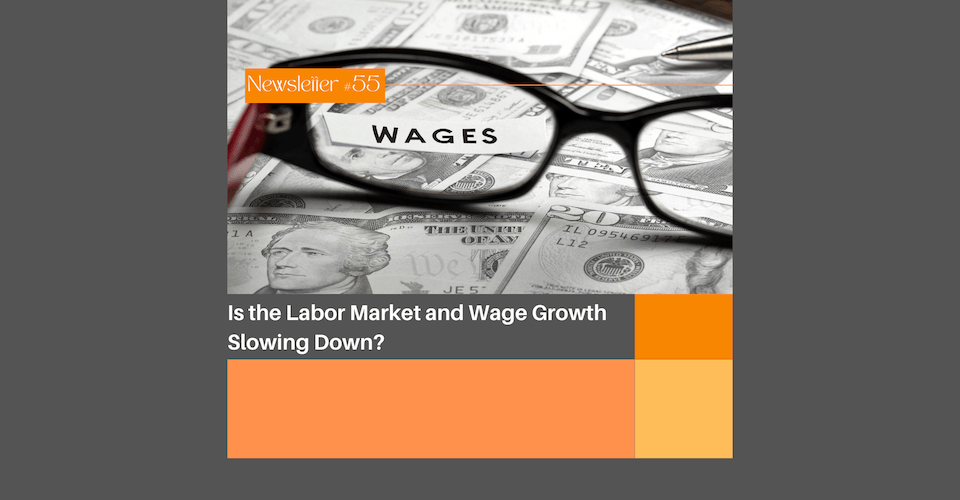New BLS Report Shows Slower Than Average Job Growth
BLS data from January 2023 to March 2023 states that,
“The employment change over these months is 17,000 lower than previously reported.”
Additionally, non-farm occupations increased by a dismal 236,000 in March, below the previous 6 months, reporting an average increase in jobs of 334,000. The largest increases in jobs in March 2023 occurred in several industries, including: hospitality (72k), privated education and health services (65k), government (47k), and professional and business services (39k). The industries with the least amount of job growth or lost jobs included retail (-15k), construction (-9k), manufacturing (-1k), utilities (2k), wholesale (7k), and information (6k).
ADP Research Institute indicated in their National Employment Report for March 2023 that “Private sector employment increased by 145,000 jobs in March.” This was based on payroll data of over 10 million US employees collected by their payroll systems from a 12-month period.
Inflation’s Impact on Wage Growth
Slow job growth and a consumer inflation rate of 6% doesn’t mean employers are slashing wages dramatically. However, it does mean that employers are making decisions based on the possibility that the market could go either way.
BLS reported that private-sector employees experienced salary increases of at least 9 cents. Since the start of 2023, hourly earnings rose by 4.2 percent over last year’s rates. ADP advised that “annual pay was up 6.9 percent year-over-year.” But there are still signs of an economy that is cooling, which impacts wage growth. Nela Richardson, the chief economist for ADP, advised in an April 5, 2023 press release,
“Our March payroll data is one of several signals that the economy is slowing,” further, “Employers are pulling back from a year of strong hiring and pay growth, after a three-month plateau, is inching down.”
In the first quarter of 2023, there have been mass layoffs at many companies, which has caused many to be watchful. In January, Google laid off 12,000 employees. Amazon announced they’d be cutting 18,000 jobs. In February, Dell, Disney, and Zoom CEOs announced they’d be letting go large portions of their workforces. Meta (Facebook) announced it would conduct a second round of 10,000 layoffs and freeze the hiring of 5,000 positions.
With inflation hovering at above-average rates, employers cannot afford to lose employees over poor compensation. It’s still an employee-driven labor market with fierce competition for talent. Employers must carefully evaluate wages heading into the next quarter and plan to stay on top of wages for the most in-demand skill in the labor market. These wage increases may be modest, but since inflation has dropped slightly since 2022, it can be certain that things will look better soon.
Labor Participation Rate and the Unemployment Rate
In The Employment Situation for March 2023, the BLS states that labor participation has only increased by one-tenth of a percent (62.6 from 62.5) from February 2023, which represents an increase of 160 civilian jobs. The US unemployment rate is holding steady at 3.5%, with the number of unemployed individuals at 5.8 million.
How does the labor participation rate factor into the unemployment rate?
According to Reuters, the labor market is still healthy, and the increasing labor participation rate indicates more people are working or actively seeking work. It’s true that businesses are finding it harder to obtain funding and are being met with higher borrowing costs. This is partly due to the failure of two big banks this month. However, this could loosen up in the next quarter as companies respond to the reduced demand.
The labor participation rate, which indicates the employee-to-population ratio, is slowly increasing as people find jobs or remain employed. The biggest share of the labor market, those employed who are aged 25 to 54, is 80.7%. This is actually the highest rate since May of 2001, according to the latest Reuter data.
The Impact on Your Business – Planning a Strategy for Q2
It’s reasonable to ask yourself what kind of impact all of this may have on your company and what factors to be mindful of heading into the next quarter to protect your human resources.
Plan Ahead
Planning ahead and watching the data is a start. Become familiar with the reports that come out from the government and pay careful attention to job growth and participation in your industry. If you see slow growth, this can be a time to focus internally on employee development and leadership efforts.
Consider Hiring Temp Workers
Consider hiring more temporary workers to manage the ebb and tide of the job market. Contract workers can be hired for short-term or long-term, part-time or full-time, and as needed. So, this can be a solution to maintaining a strong workforce without worrying about the overhead of things like benefits and salary increases. You can even work with an agency that specializes in placing skilled workers in your area.
Offer Financial Assistance
Find ways to help employees stretch their earnings further during high inflation periods. Consider ways to offer more to employees in the form of corporate discounts or incentive programs. Offer learning opportunities to help employees brush up on their skills and transfer knowledge from one generation to another. Partner with local banks and negotiate for lower fees and other perks.
What does the future hold for us?
Only time will tell what the next few months will bring, but things are looking better than expected from this time last year. Be cautious of over-hiring or letting people go. Work on production and retention as the focus areas of your HR strategy.

